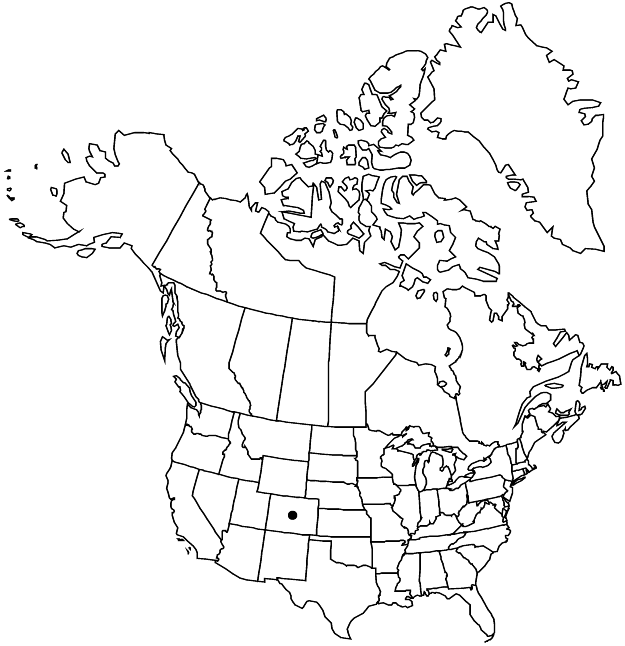Difference between revisions of "Eriogonum pelinophilum"
Great Basin Naturalist 33: 120. 1973.
FNA>Volume Importer |
imported>Volume Importer |
||
| (One intermediate revision by one other user not shown) | |||
| Line 53: | Line 53: | ||
|publication year=1973 | |publication year=1973 | ||
|special status= | |special status= | ||
| − | |source xml=https:// | + | |source xml=https://bitbucket.org/aafc-mbb/fna-data-curation/src/2e0870ddd59836b60bcf96646a41e87ea5a5943a/coarse_grained_fna_xml/V5/V5_470.xml |
|subfamily=Polygonaceae subfam. Eriogonoideae | |subfamily=Polygonaceae subfam. Eriogonoideae | ||
|genus=Eriogonum | |genus=Eriogonum | ||
Latest revision as of 22:11, 5 November 2020
Subshrubs, spreading, not scapose, 0.5–1(–1.2) × 0.8–3(–4) dm, floccose or glabrous, grayish. Stems spreading, without persistent leaf bases, up to 1/3 height of plant; caudex stems absent or compact; aerial flowering stems spreading to erect, slender, solid, not fistulose, 0.05–0.1 dm, thinly floccose or glabrous. Leaves cauline, 1 per node; petiole 0.05–0.1 cm, floccose; blade oblanceolate, 0.5–1.2(–1.5) × 0.08–0.2(–0.3) cm, densely white-tomentose abaxially, subglabrous or glabrous and green adaxially, margins tightly revolute. Inflorescences cymose, compact, 0.1–2 × 1–3 cm; branches dichotomous, thinly floccose or glabrous; bracts 3, scalelike, triangular, 0.5–1 mm. Peduncles absent or erect, 0.1–0.5 cm, floccose or glabrous. Involucres 1 per node, narrowly turbinate, (2–)2.5–3.5 × 1–1.5 mm, floccose or glabrous; teeth 5, erect, 0.3–0.4 mm. Flowers (2.5–)3–3.5 mm; perianth cream, glabrous; tepals connate proximal 1/2, essentially monomorphic, oblong; stamens slightly exserted, 2.5–4 mm; filaments sparsely pilose proximally. Achenes light brown, 3–3.5 mm, glabrous. 2n = 40.
Phenology: Flowering May–Jul.
Habitat: Heavy clay flats and slopes, saltbush communities
Elevation: 1600-1900 m
Discussion
Of conservation concern.
Eriogonum pelinophilum is a federally listed endangered species with designated critical habitat. It is known only from Mancos Shale hills in Delta and Montrose counties. Much of the former habitat in the Montrose, Colorado, area has been destroyed since the species was listed in 1984. The type locality in Delta County was largely destroyed in 2001 by off-road vehicle activities in the designated critical habitat. A small population is preserved at the Fairview Natural Area east of Montrose.
Eriogonum pelinophilum is similar to E. clavellatum although the two are well-separated geographically. It is a smaller plant than E. clavellatum in habit. The flowers of E. clavellatum lack the pronounced, rounded, greenish-red to brownish-red base of the perianth seen in E. pelinophilum, and the tepals are distinctly dimorphic in E. clavellatum whereas they are essentially monomorphic in E. pelinophilum. Ants actively pollinate the flowers, being involved with both self- and cross-pollination. Some 50 additional visitors were found associated with the flowers, but none was confirmed as a pollinator (W. R. Bowlin et al. 1993).
The species is in the Center for Plant Conservation’s National Collection of Endangered Plants.
